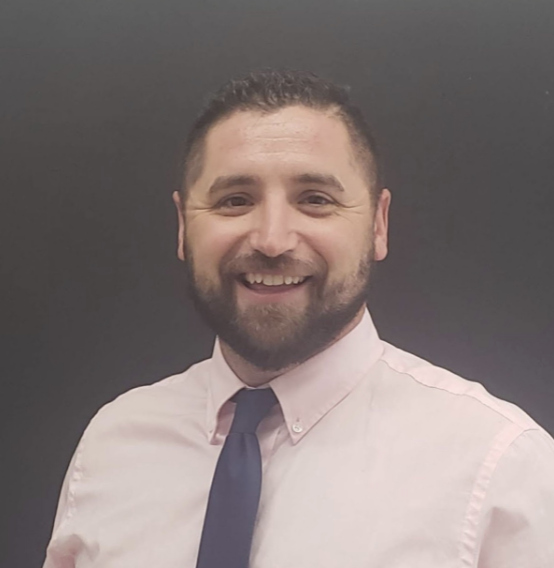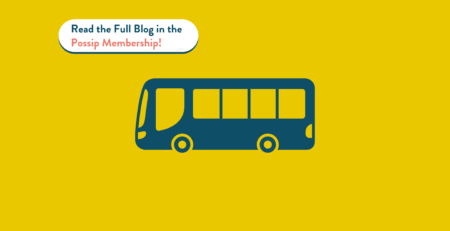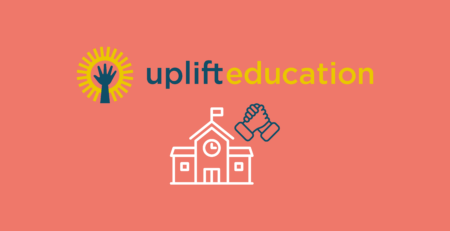During troubling times, schools need a Principal who supports students coming of age during the pandemic. Micah Klaver is the 7th Grade Assistant Principal at McAuliffe International School in Denver Public Schools. Mr. Klaver, a career educator, is a native of Colorado. He came to McAuliffe in 2013 after time with Americorps, City and Non-Profit Outdoor Recreation Programs and as an Expeditionary Learning Teacher. He is passionate about kids and communities. As well as, facilitating and creating learning experiences that challenge and empower students to dig deeper, teaching students to ask questions and become positive leaders in their communities or being an advocate and encourager.
Mr. Klaver holds degrees from the University of Colorado and the University of Denver. He and his wife Kate, also a school administrator, have three young daughters . They spend as much time as possible backpacking, skiing, hiking, and camping. Mr. Klaver shares his first-hand perspective, being a middle school administrator during the Covid 19 pandemic.
As a father of three and a middle school administrator, my focus over the past two years has largely been on the impact of the global pandemic on our kids. For instance, students around the world, including our own students, have waded through some incredibly challenging circumstances over the past twenty-two months. As parents, teachers, and mentors we have tried to empathize with the struggle of entering adolescence during a global pandemic. I’m afraid as our students/children so often remind us…we just don’t understand. Consequently, I fear that their argument holds more weight than ever.
Middle School is a time of high emotions, anxiety, social drama and risk-taking behaviors. In other words, it is a hormonal hurricane season that lasts the better part of three years. This year, middle school teachers and administrators have seen a significant need for support, structure and compassion. Given that, these needs were borne out of the gaps in opportunities for healthy social and emotional development. For all intents and purposes, our students have missed the integral experiences of a normal adjustment into adolescence. In our community here in Denver:
-
Sixth-graders missed the support and guidance of a compassionate transition to a more rigorous and complex learning environment.
-
Our eighth-graders have not been able to mark or celebrate the passage of these awkward yet integral years prior to beginning high school.
-
Several students have remained online for the entirety of a grade level (in some cases two). They have not been in school or around other students for twenty-two months.
“As students have returned to various forms of in-person learning we are learning more and more about what supports might be necessary to move forward. We are, at this moment, a nation of children who need the time to heal, adjust, and relearn how to function in healthy environments as well as form appropriate relationships.”
FINDING COMMUNITY
In hindsight, when our students were threatened with isolation in March of 2020, they adapted to find community and connection in innovative ways. Adolescents are gifted and finding their way around barriers to socializing. Social media platforms experienced a spike in new users from the teen and pre-teen populations and gained tremendous influence over our kids. In a time when our students desperately need to be built up, validated, and affirmed, they were instead plugged into a culture that tears down, dehumanizes, manipulates, and destroys.
As we entered back into the community with one another this year, the stress, anxiety, pressure, and the hurt our students carried started to show in both externalized and internalized behaviors. Student reports of self-harm, online bullying, and harassment had grown exponentially from pre-pandemic learning. Physical fights, inappropriate language, and vandalism (such as the TikTok Lik Challenge) also became prevalent factors in student life. Though overwhelming for educators and parents alike, the thing we all had to remind ourselves was that behavior is communication whether it was our preferred form or not. They were telling us about their frustration, their brokenness, and their grief. I think we all struggled with how to respond.
RESPONDING TO THE CHALLENGES
Did we need to shift course as a school community? We fought back against what felt like very reactive responses to the situation. We took many masked deep breaths and had to center ourselves as a community. Over the years, we have worked hard to build a culture that can be flexible. We must meet the diverse academic, social, and emotional needs of our kids. With an increasingly diverse community of learners, we have prioritized communicating a very simple message:
“You”……
“belong here!”
“can be successful here!”
“are loved here!”
We know safe and supportive learning communities exist when students are able to get their needs met. This year, that has meant doubling down on our efforts to build relationships while hurdling obstacles like masks and quarantines. Comparatively, it has meant teachers, administrators, and support staff finding every opportunity to be present. For example, be with kids in hallways, at lunches and enrichment activities as much as possible. It has meant communicating frequently, transparently, and authentically with families and other stakeholders. Most importantly, it has meant making the decision to see this pandemic as an obstacle but not an excuse or barrier.
PARENTS AS PARTNERS
Our parent community has played an integral role in the success of our kids as well. We have pushed our families to stay engaged, ask questions, and create space to listen to their students. We want them to know the challenges their students are facing. Also, what areas are seeing of strength and growth. Additionally, we have tried to support families in the process of healing for students as well, reminding parents that their students don’t always want solutions but they do want someone to listen.
While we have done our best to navigate this pandemic for our families we need to remember our kids have experienced this in ways we cannot fully understand. Are we creating safe spaces for them to process? We continue to challenge our families to engage in tough conversations around social media, peer pressure, language, and healthy relationships. There is no “right way” to engage in these challenging conversations. However, understanding our silence communicates a message we may not want to be delivered.
In all learning communities, it has never been more important to reflect and work together.
Ask questions, seek clarification and assume positive intent. There was a time early in the pandemic when our neighborhoods collectively howled in the evenings. This was to show our support for our front-line workers. It felt a little silly at first but the feeling of hope, belonging and togetherness was magical. Finally, I pray this pandemic finds its end. I hope we can continue to find a way to keep howling, especially for our kids. Together there is no problem we can’t solve, hurdles we can’t clear, and challenges we can’t face. Our students need us to lead, love, and learn how to heal with them. I have been inspired often by a quote from Dr. King who understood this all too clearly:
“All this is simply to say that all life is interrelated. We are caught in an inescapable network of mutuality; tied in a single garment of destiny. Whatever affects one directly, affects all indirectly. I can never be what I ought to be until you are what you ought to be. You can never be what you ought to be until I am what I ought to be.” – Dr. Martin Luther King, Jr.
– Micah Klaver
Follow Mr. Klaver on Linkedin here!






